Blog
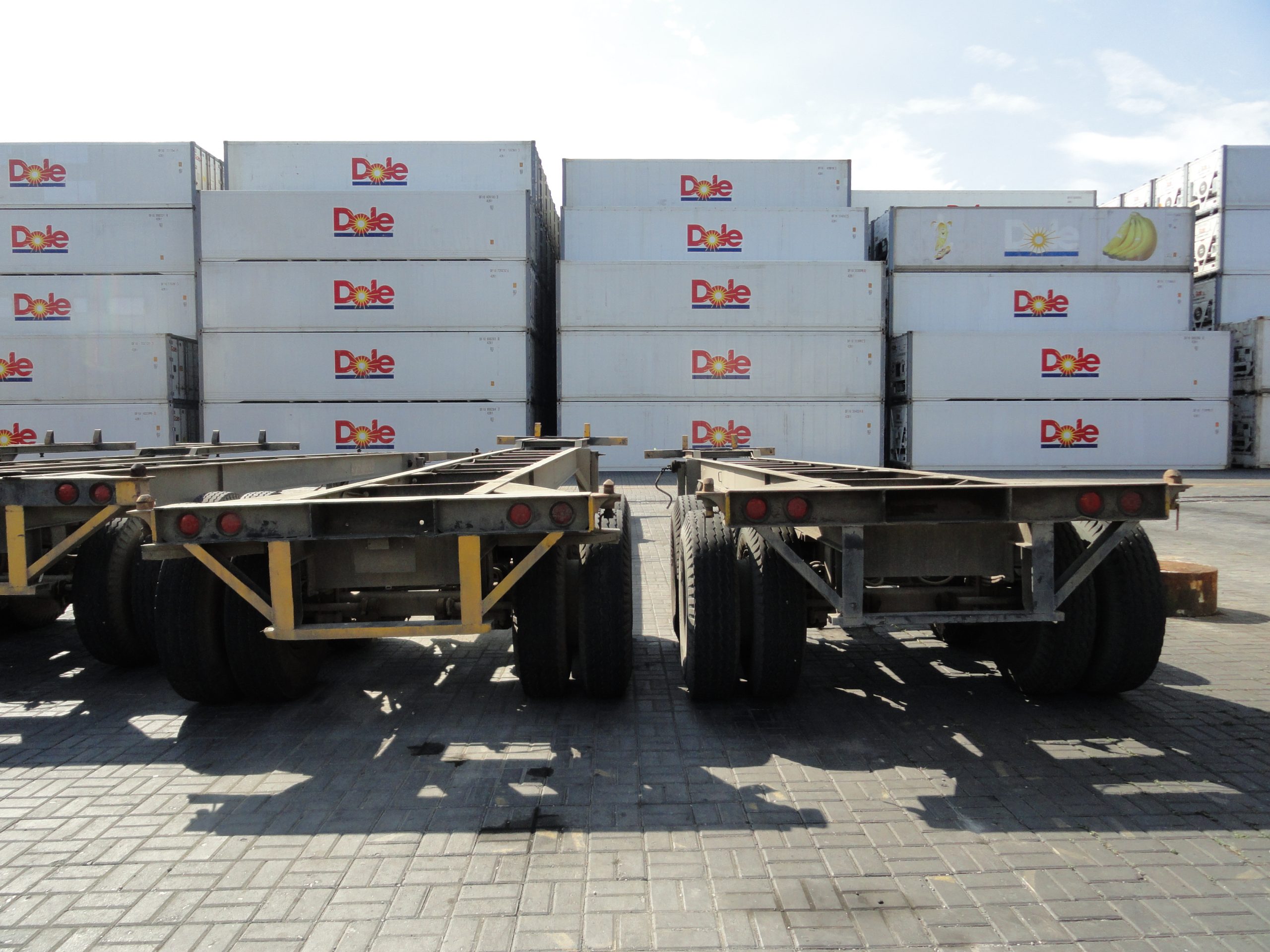
Dec
The market for refrigerated freight transportation just keeps on growing and, according to some estimates, could easily be responsible for moving more than 3 billion tons of product in the next couple of years.
These kinds of numbers just serve to highlight the importance of refrigerated shipping in your supply chain, because any of those products could be damaged or have their shelf-lives significantly reduced if they experience temperature increases of just a couple degrees.
In other words, uncontrolled shipping temperatures could lead to billions of dollars in losses – both for the producers and the transporters – if those goods are damaged in transit. On top of that, there are public health issues at stake, and many agencies are watching to make sure there are no bacterial or fungal contaminations popping up during the shipment.
Supply chain management in markets that deliver perishable items, fresh or frozen, have to make temperature-controlled shipping a priority from start to finish.
Understanding the Cold Chain
A supply chain that is focused almost exclusively on frozen or other perishable products is normally referred to as the “cold chain,” and has a huge reliance on refrigerated trucking.
More specifically, cold chain logistics is not just about transporting temperature-sensitive goods from one location to another. It is about transporting these products along a supply chain while adhering to very specific instructions for planning, packaging, and shipping the goods in order to maintain their integrity.
Providing consistent temperature control along the way is a critical part of this process and helps to ensure that the products aren’t altered or impacted in a way that could reduce their shelf life, efficacy, or freshness.
The Challenges of Refrigerated Shipping
Moving regular freight straight from point A to point B is, well, pretty straightforward.
Moving cold, perishable products, however, requires a bit more care and concern to make sure everything arrives in an unaltered state, ready to hit the shelves.
To that end, there are a number of challenges that must be considered at every stage of the process. These might include:
- The point of origin and the final destination and whether or not they are within a certain distance from each other.
- The equipment needed to handle cold products (food safety standards cannot be ignored in any way).
- The ability to correctly store and load frozen or perishable goods. This means both the trucks and the warehousing must have the capabilities to load and store these products safely.
- The smooth flow of inventory to ensure products never spend excessive time in an un-refrigerated environment – i.e., waiting to be loaded. When the time comes to move the goods, you must have the capabilities to shift them swiftly and carefully.
- The estimated delivery times must be very accurate and on-time deliveries become crucial because of the time sensitivity of these products.
The Cold Chain in Action
Some of the industries that rely on refrigerated shipping the most include: fresh foods (including all fruits and vegetables as well as meats and seafood), floral, dairy, and pharmaceutical.
Let’s take a closer look at one of these industries in particular – the pharma industry – to see why reliable refrigerated freight shipping is so important.
(Note: further details on how the transportation side and the production side need to work together for the best results in this industry can be found here.)
As the pharma industry continues to grow and develop, more and more drugs are coming out that are sensitive to temperatures or the passing of time. (This has to do with the shift from simple chemical-based formulas to more complex designs that can be impacted by their environment.)
Unfortunately, since many companies weren’t ready for this shift, billions of dollars of pharmaceuticals were stored and shipped (or delayed) at improper temperatures, which means they were either putting less-effective products on shelves or forced to recall them entirely.
In the worst-case scenarios, these products could have posed a real threat to the consumers if subpar or spoiled products were sold to the general population. (And that doesn’t even touch on the possible lawsuits that could result from such actions.)
Any pharmaceutical product with any kind of temperature sensitivity will have some real shelf-life concerns. Yet, with so many more products being shipped around the country than ever before, the risks of human error and other road safety concerns are quite common. Routes must be planned perfectly, the logistics of warehousing and loading and unloading must be flawless, and communication and transparency with the producers and receivers should be clear and constant.
However, as long as the products are properly labeled – indicating the importance of temperature-controlled storage and transportation – these products can make it to the store shelves in great condition. They will maintain their efficacy and give the seller a chance to stock and move their merchandise.
Understanding the Benefits of Refrigerated Shipping
The number and variety of goods that are available every day are higher than ever. And the same can be said for customer expectations.
Of course, a lot of these products can deteriorate and lose their value if they aren’t properly stored, shipped, and handled and the right temperature.
When it’s done right, producers can meet the growing demand for these types of perishable goods. More than that, though, they can meet the regulations on put in place by government agencies like the FDA.
Always Improving
As the demand for better refrigerated shipping in the supply chain continues to grow, the transportation industry has responded with new developments for better flows, better electronic tracking, and more visibility into the process.
As we continue to develop our own processes and find even better ways to maintain the proper temperature in our trucks and warehouses, our clients can continue to expect better services, better deliveries, and better profits.
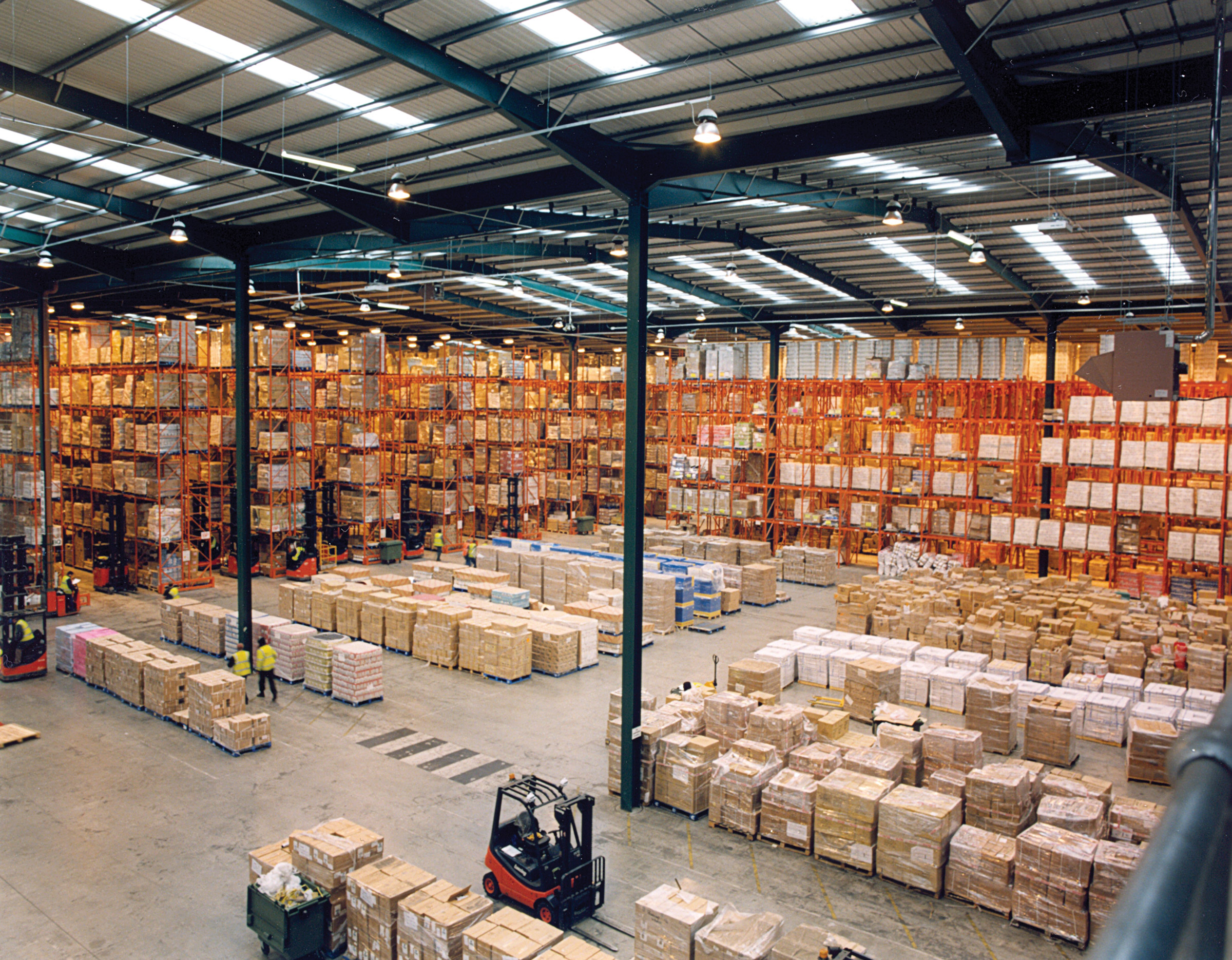
Dec
Critical Warehouse Storage Considerations to Streamline Your Supply Chain
SEO .COM 0 comments Uncategorized
Warehouse storage services play a significant role in the supply chain, which means there are several elements that you must consider to ensure your products are received and distributed as efficiently and effectively as possible.
Everything from lead times and supply chain velocity to anticipated throughput, receiving, storage, and dispatch volumes could impact the type of warehousing solution you need. Even then, these needs could change on a seasonal basis, so you need to think about both short-term and long-term solutions.
Let’s take a closer look at some of the most critical warehousing considerations.
Types of Storage
This may seem very obvious on the surface of it, but it’s important to define these terms before we get into everything else. There are several types of warehouse storage solutions available to you, including:
- Ambient storage – A dry storage warehouse for goods that don’t require any particular temperature control. Most products will fall into this category.
- Cold storage – This is specifically for fresh food products and other perishable goods.
- Hazardous storage – This is for anything from flammable liquids and chemicals to other materials that require extra security and safety precautions. (Not currently available at Calex ICIS.)
- Outside storage – Some products have characteristics that allow them to be stored in the yard rather than in the warehouse.
Accessibility and Flow
Warehouse operators need quick and easy access to every pallet within a warehouse. It must be convenient to identify and obtain items, and the design/organization of the warehouse must support the flow of products into and out of the building.
A warehouse layout needs to always consider the flow of work. Every sequence of actions that must be carried out should be located conveniently to each other, in the order in which they must be accomplished. Inventory must be able to flow smoothly in and out in a logical sequence, so regular flow analyses may be required.
When it all comes together properly, there should be an uninterrupted flow of people and inventory through the building without any bottlenecks or overly high traffic areas.
Something as simple as aisle width can have a huge impact on accessibility, though it’s something many businesses don’t consider in their own warehouses. The width of an aisle will change the way people and machines move through spaces, and it will also influence the size of forklifts or trucks you can buy as your company grows.
It’s all about organizing the warehouse for your current convenience and future needs.
Space
For most companies, this is the first consideration when they begin looking at warehouses. The allotment of space will obviously be one of the most important variables in order to keep your supply chain running efficiently. You don’t want to pay for too much, and you never want to be caught with too little on hand.
A capacity analysis can help you determine how much space you really need for your inventory.
Location
A warehouse that is not located anywhere near your business or your consumers may have a lower cost, but it will add some very real impediments to your supply chain.
It’s important to analyze your needs and determine the most effective geographic location so you can balance warehouse costs with transportation costs.
Is the warehouse located near shipping docks? How long will it take to reach end destinations?
At Calex, we have a 99.7% on-time service history because you can reach nearly 50% of the U.S. population same or next day from our facilities.
Internal Environment
The heating, cooling, and lighting of a warehouse are critical for the care and protection of your inventory as well as the warehouse staff. Employee comfort contributes to productivity and accuracy, so this is something that can’t be overlooked.
The warehouse should never skimp on effective lighting, since it likely has the highest impact on productivity. More importantly, it reduces the risk of accidents and injuries on the job.
In areas where perishables will be stored, the proper temperature must be consistently maintained in order to protect the inventory.
Security and Safety
Warehouses need to have the necessary security and safety systems to prevent thefts and accidents and collect the records it needs to dispute any potential liability claims.
With so many moving parts in a warehouse, there are a lot of potential risks – high shelves, heavy machinery, lots of people moving around, electrical and chemical incidents, and much more.
Theses systems need to be made especially for warehouses, because a lot of these huge structures might not be able to support traditional wireless systems. For more reliability, a warehouse needs to use a hard-wired system for their security systems.
On top of that, security cameras need to be strategically located in order to maximize their fields of view and cover every potential area where a theft or accident could happen. The same goes for alarm sensors, whether it’s a door or window break sensor, fire alarm, motion detector, or another similar device.
Warehouse Management System
The technology that keeps our warehouses running at peak efficiency continues to change and evolve. At Calex, our warehouse management system (WMS) provides the tools we need to keep everything moving as smoothly and as quickly as possible.
We use the WMS to eliminate a range of manual processes while optimizing your inventory storage, tracking, workload distribution, and shipping. It’s also what allows us to provide as much transparency as we can so you are always connected to your inventory and know exactly what is in stock and when you’ll need to consider another shipment.
Flexibility in Storage Solutions
Very few companies need the same amount of storage all year long. After all, if your inventory needs remain stagnant, that might say something unfortunate about your sales.
You need warehouse storage services that can grow or change with your needs, whether they fluctuate with the seasons or grow and shrink depending on industry trends.
On top of that, not all products are uniform shapes. Shelf and rack sizes and heights may need to change. Other precautions may need to be taken to keep fragile products safe no matter where they are in the warehouse. Your solution needs to be as flexible as your needs.
Consider Them All
This may seem like a lot of things to consider when you are looking at your warehousing options, but they are a part of your supply chain solutions. By considering all these elements, you can expect improvements in search and retrieval times, pick-and-pack fulfillment accuracy, and workflows/processes.

Jun
The transportation industry is booming. There are more trucks on the road than ever before, but there remains an industry wide shortage of drivers across the country. In 2017, the American Trucking Association has projected that over one million drivers will need to be added to the workforce to meet the ever-increasing demand of the country. Unfortunately, this number has only grown over time, as the number of drivers hired since the study was conducted have not been able meet demand.
Despite the positions being available, most young people do not want to drive trucks due to lifestyle associated with truckers. Driving a tractor trailer is not an easy job and it’s not for everyone. The hours can be long and the time spent away from your family can be hard. Cross country trucking can be intimidating and it is a difficult job. Luckily, cross country driving is not the only position that needs to be filled. Local and regional drivers are needed as much as cross country drivers and their hours are normally not nearly as arduous. Local or regional positions may even have drivers home daily or every weekend.
Trucking laws are also undergoing a transformation. Electronic logs are making it harder for drivers and companies to fake their hours in order to drive illegally and meet their delivery appointments. This has cut down considerably on the over expectations of customers and shady businesses alike and brought driving hours down to a reasonable number. Drivers now must take their federally mandated breaks as required or face stiff fines if caught. The expectations that a driver will drive 24 hours straight to deliver their load are gone. Still, many changes still need to be made. As of today, drivers must be 21 years old to drive a commercial truck across state lines. Because of this law, drivers that are not interested in higher education cannot simply enter the driver workforce once they leave high school. They are limited to local in-state deliveries, and that normally does not fit the needs of most trucking companies. There are efforts being made to change the age required to cross state lines but lawmaking is a slow process.
If/When driverless trucks become common drivers should not assume that they will be out of a job. Some think that automation will eventually replace the truck driver, but driverless trucks are still a long way away, if they ever get here to begin with. Not only is the technology not there yet, automated trucks will have to go through a long, vetting process with the government before they are allowed on the road. After that people will have to get used to seeing large, heavy trucks driving down the highway by themselves. Plus, drivers will need to be in trucks for emergencies and various other scenarios that automated trucks cannot handle. And who’s to say that drivers will not be able to enjoy the luxuries an automated truck will provide them. It may in fact make their job easier.
The driver shortage in America is not a problem that will be solved overnight, but it is providing an opportunity for those that want to enter the industry. Millennials may want to consider the industry because as it stands now, there is money to be made. Wages and benefits are increasing as companies fight over available drivers. Most companies are willing to work to accommodate a driver’s needs and schedule. Local and regional jobs that get drivers home several days a week are available. It just required interested parties to take a look.

Jan
Shipping costs have been increasing for years throughout the entire country, even affecting industry giants like Amazon, General Mills, and Walmart. Unfortunately (and unsurprisingly) these increases get passed down to the consumer in one way or another, but it is most often experienced as an increase in the prices of everyday goods.
One of the main reasons for increased shipping costs? A nationwide driver shortage that shows no signs of getting better.
The simple fact is that even when the economy is doing well, the trucking industry cannot keep up with the demand. Ask any transportation company why costs are going up and they will tell you the same thing:
Regardless of how much a load pays a driver, there just are not enough drivers available to move the freight customers need as quickly as they need it moved.
Driver shortages in America have been an issue for years, but never to this degree. Now, with low national unemployment rates, the pool of potential drivers is at a low point, and many are not interested in the job.
Why Is This Happening?
Among the young people just entering the job market, most simply aren’t interested in being truckers. This could be because of the long hours, stressful work environment, and isolation that can come with the job.
On top of that, many do not see a future in the industry, as self-driving trucks from Waymo and Uber inch closer and closer to becoming a reality. While these trucks are still years away from being a regular occurrence on the road, inroads are being made, as Waymo just launched a self-driving tractor pilot program in Atlanta.
The Electronic Log Mandate going into effect across the country is also causing existing drivers to drive fewer miles, as they are now federally mandated to be able to be on the road for no more than 11 hours at a time. These electric logging devices also stop less scrupulous drivers from lying about their drive time on the road.
While these devices increase safety, they have cut down on how much freight shipping is possible across the country.
How Does This Impact Consumer Pricing?
The lack of available drivers can be a huge bottleneck in the supply chain, so, with the driver shortage as it is, companies have to hire and retain new drivers by raising driver pay and providing additional benefits.
While this is good for the driver, it is not so great for everyone else. The higher driver pay causes an increase in operating costs for the trucking company, which causes higher shipping rates for trucking company clients, which causes higher prices for the everyday person shopping at the grocery store or local mall.
While no one is a fan of higher store prices, it appears to be unavoidable. Online shopping and the retail industry continue to outpace the rest of the economy, especially the transportation industry.
This is the reality of the world we live in, and higher prices of everyday goods may just be the new norm. Inflation has remained low over the past decade because companies found ways to be more efficient in their daily operations, offsetting the rising costs of shipping services. That is not something that can continue to happen forever, though, and we are now only beginning to understand how that will affect the rest of the economy.
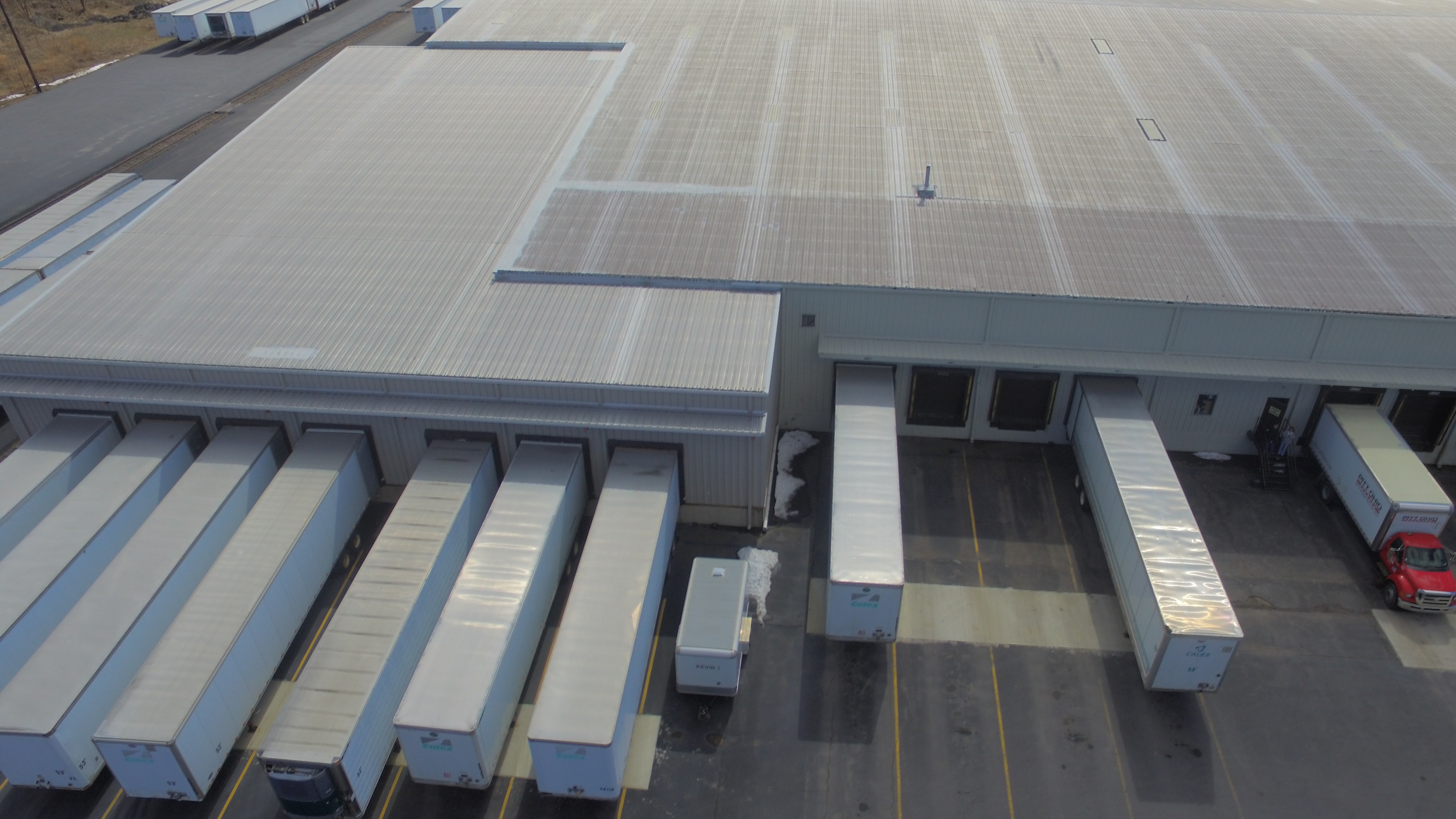
Oct
Since 1974 Calex ISCS’ mission has been to “Say what you can do and do what you say,” and with a 99.7% on-time service history, they have the stats to prove it.
But with the technological transformation that’s happening in the transportation and logistics industry today, Calex ISCS also recognizes that it must continue to evolve, embrace change, and find even greater efficiencies to continue to offer its customers the most competitive rates on the market.
In recent years, Calex ISCS has worked with Microdea, a document management and automation software company, and its product Synergize to revolutionize their back-office processes. The goal for Calex ISCS is to eventually to be completely paperless.
Digital documents are now accessible from anywhere, so looking up information is quick and easy. All invoices are now automatically emailed out, saving time and making cash flow more predictable. As Calex ISCS has continued to expand their services nationwide, there’s been no need to hire new Accounts Receivable staff – that’s the magic of using technology to run an efficient back office.
In the years to come, Calex ISCS plans to continue to expand its use of technology and to find greater efficiencies in every area of its business. When you’re running an efficient business, you’re able to say what you can do and do what you say, and that’s a promise Calex ISCS is just as committed to keeping as it was in 1974.
Guest Author: Steele Roddick
Steele Roddick is a Content Specialist at Microdea where he creates content that helps transportation companies drive their business forward. He’s endlessly fascinated by technology trends, chess, and discovering new places to travel with his wife.
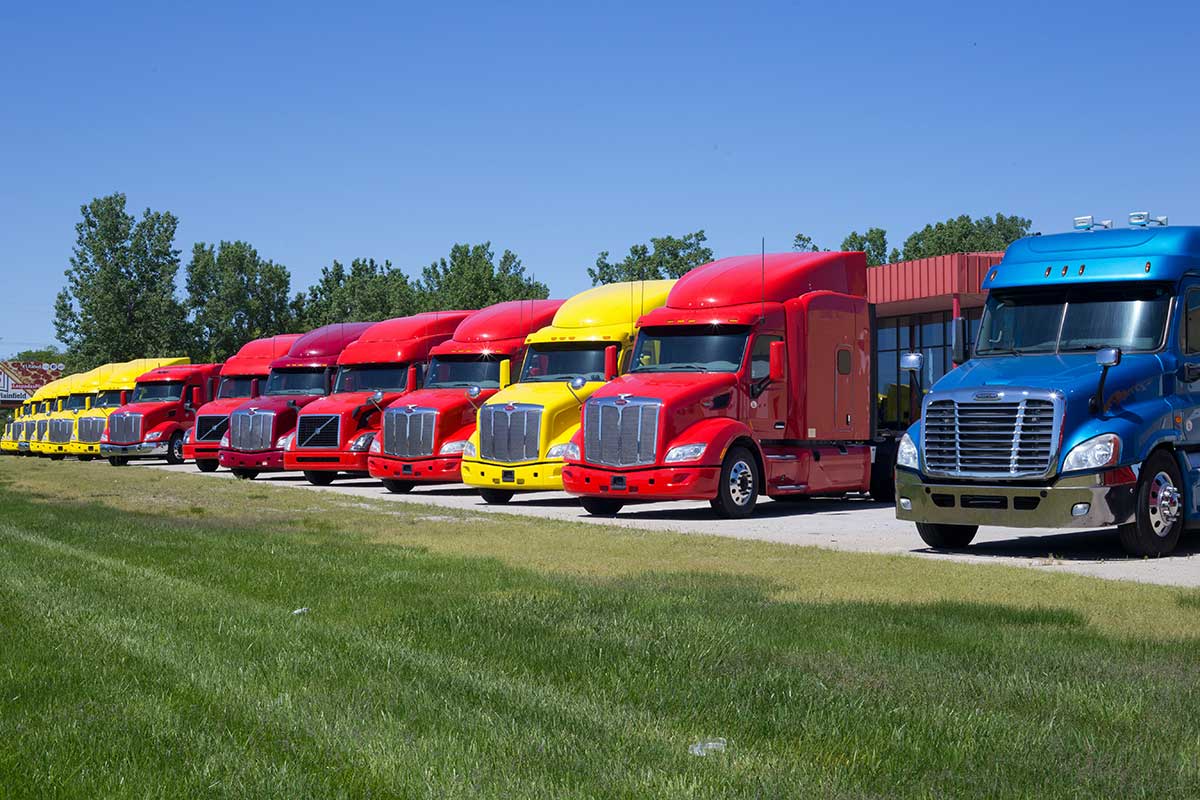
Nov
Recruiting and retaining truck drivers can be an uphill battle. If you own, manage, or have a role as a driver recruiter than you already know the struggle and most likely have experienced this! Also, you understand the industry’s unending shortage of truck drivers and the climbing numbers in turnover rates.
American Trucking Association reports that the turnover rate for truckload carriers has grown and drivers are becoming scarce. The prediction is that the low and stable turnover rate could be short-lived and the driver shortage will become more and more of a problem.
Calex is enhancing our company driver health benefits, increasing our driver pay by 10% to stay competitive with the market and ensuring our drivers are being appreciated the way they want to be. We are a family owned business and keep that culture alive in our workplace environment from day to day.
Linked is a good article to read on driver retention!
http://bit.ly/2zHkSWq
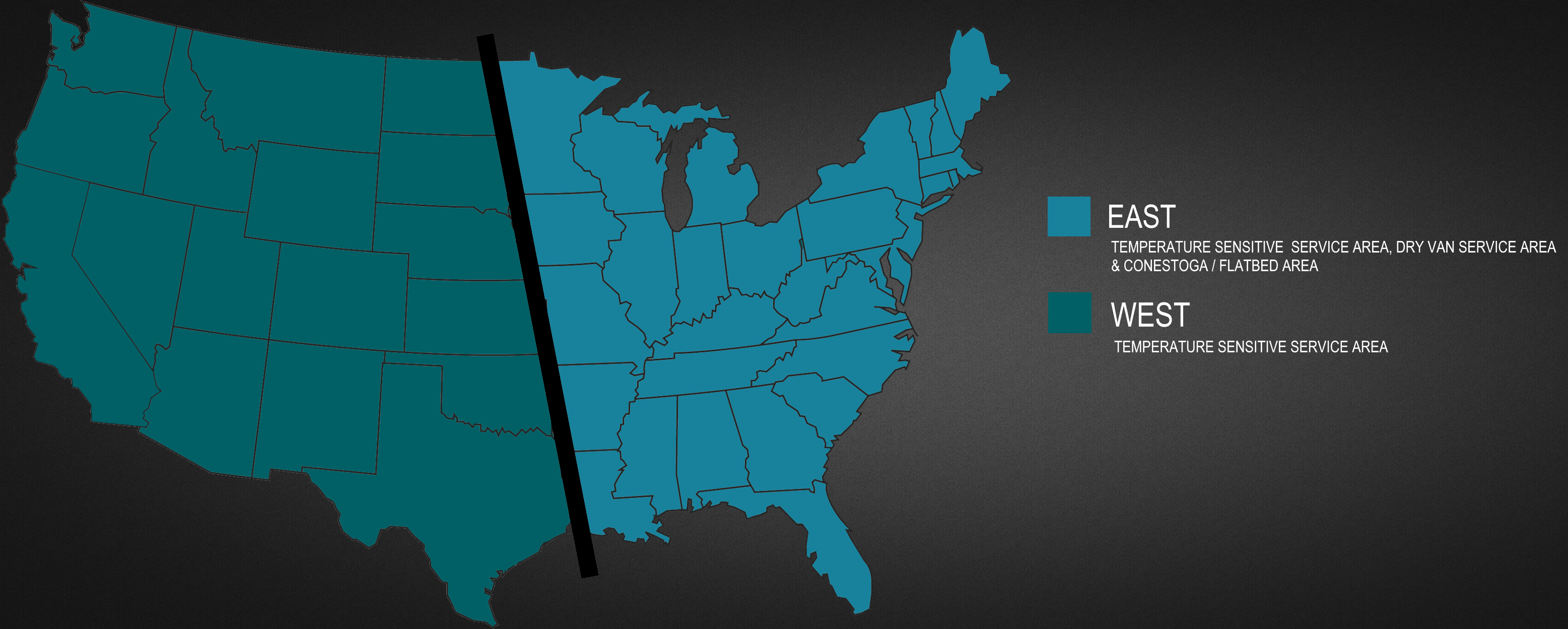
Nov
How often have you called a company only to be told they could not help you? Yet a customer’s need should be their main focus. Sometimes a request is cost-prohibitive. Shouldn’t there be options? We too have experienced this exact situation while running our own business.
Calex’s purpose is to help companies of all sizes maximize the efficiency in their supply chain and distribution network. We strive to maintain alignment with the current and changing needs of the marketplace by staying proactive. We have recently introduced a “Cool Ride” program to our current customers and are also rolling it out to new customers as an option to make it easier to choose the right carrier, Calex! The Cool Ride program offers LTL shipments on refrigerated or dry capacity loads out of Northern New Jersey and Eastern Pennsylvania, shipping to the Southern states. *See attachment for pricing and specifics.
With that being said, Calex is happy to announce that we recently increased our driver pay by 10% and introduced a new health care package for drivers and family. Focusing on these market changes, we look for the opportunity to strengthen our core, and offer training programs to newer drivers while attracting qualified and experienced drivers so that we are capable of leading at every turn.
Calex has been a family owned company since 1974, and know the supply chain management process and warehouse efficiency standards. We are up to date with today’s latest technology but maintain an old-fashioned commitment to customer service. If you should need either or both of these services please consider Calex to provide your company with expert service levels that will help you maintain your highly regarded reputation in the marketplace. For any additional information please contact our office at 570-602-3142.
Respectfully,
Calex ISCS
ATTACHMENTS
Calex Cool Ride Program – 2017 – PAE Origin
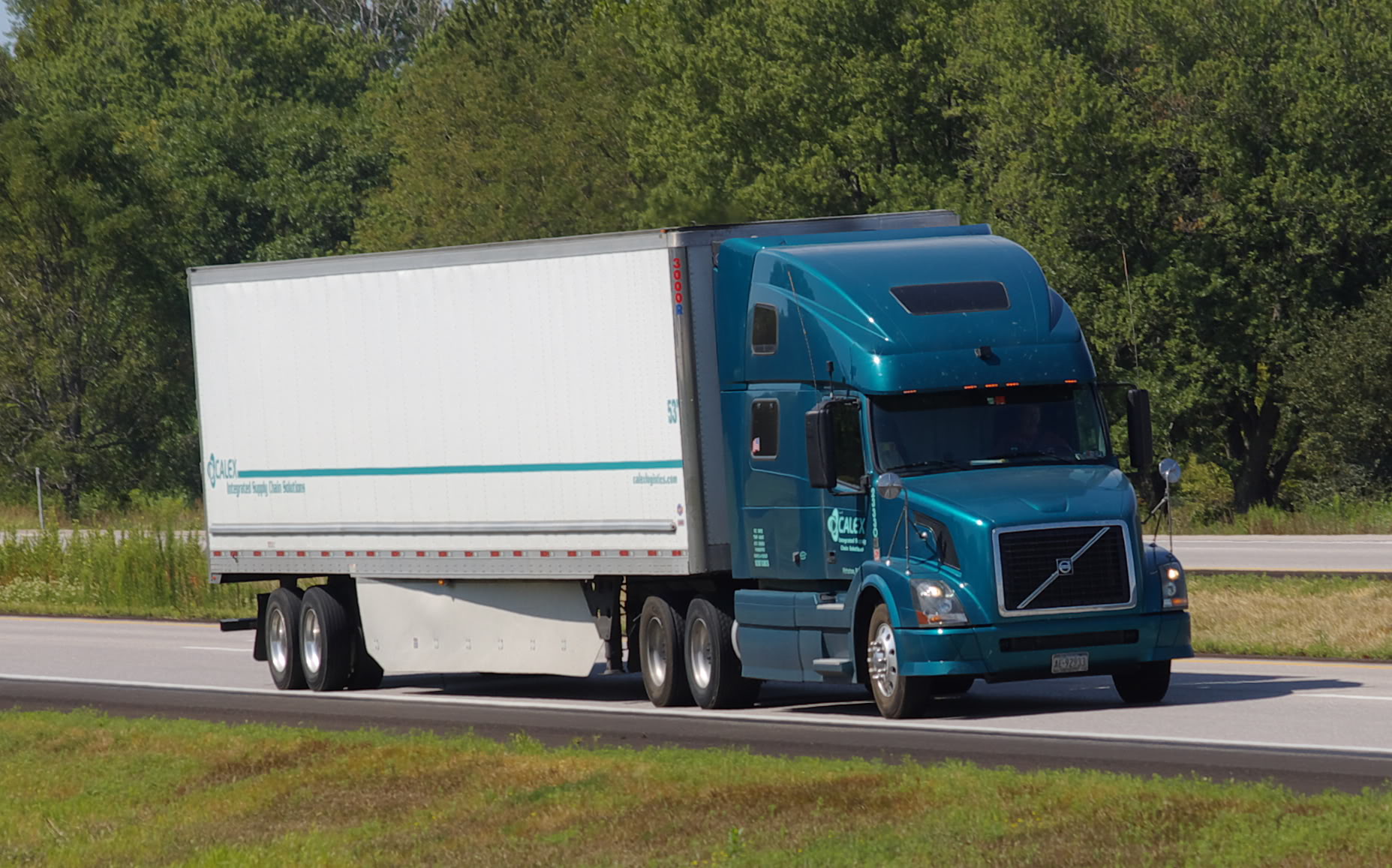
Oct
CBS News recently wrote a piece highlighting the driver shortage epidemic the country is currently experiencing. More than 70 percent of all goods in the continental US are carried by truck, and most companies are having trouble keeping all their seats filled. With Americans buying more goods than ever before the shortage will be exacerbated as time goes on.There is currently a shortage of roughly 50,000 drivers nationwide, and that number is expected to more than triple within 10 years.
Industry experts expect this to cause problems throughout the economy, including product shortages, delivery delays and higher prices as it becomes harder and harder to find willing workers. Demographics are partly to blame, as Millenials are increasingly less and less willing to work the demanding lifestyle of a truck driver. Available drivers are highly sought after, making it a driver’s market. It is easy for an unhappy driver to jump ship to a new company with higher pay, as the shortage has left companies desperate for bodies. Many trucking companies now pay for a CDL and on the job training in order to entice drivers to stay.
The trucking business looks to be staying a driver’s market for the foreseeable future. While self driving trucks are still years away from widespread adoption, there may be no other option for carriers if the driver supply does not change for the better.
https://www.cbsnews.com/news/america-faces-shortage-truck-drivers/

Oct
Calex Integrated Supply Chain Solutions is announcing the implementation of Lytx’s product, DriveCam, into our fleet of high-end trucks.
The DriveCam program addresses safety by combining data and video analytics with real-time driver feedback and coaching throughout our shipping services.
Always Increasing Safety
Calex has made the decision to incorporate DriveCam’s solution as part of its operational initiatives to identify and target the top behaviors contributing to fleet risk. DriveCam’s model identifies behavioral improvement opportunities for increased safety through an iterative process of scoring, prioritizing, and tracking the results of driving behaviors. In-cab video captures driving behavior, which is objectively reviewed and scored, and then passed on to our fleet for use in coaching drivers.
Calex will manage the DriveCam program through a web-based online portal.
The Benefits of Reliable Camera Footage
Almost anything can happen on the road, so it’s critical that our drivers have as much visibility as possible and, should anything unexpected occur, we have documented evidence of the situation.
This kind of evidence is critical for many reasons, including insurance purposes, exonerating drivers, and more.
We chose this particular system for its wide range of features and abilities. The Lytx DriveCam device combines machine vision and artificial intelligence to provide real-time alerts to help avoid potential distracted driver issues and continually record incidents that may be needed for evidence later.
We can record up to 100 hours or reliable video, stream what’s happening in real time or allow the driver to record video manually when its necessary.
This high-tech solution provides benefits that go beyond the traditional dash cams by “identifying and categorizing the moments that matter.” Essentially, this means that it allows us to see risk as it occurs, which is why we can detect and deter distracted driving.
DriveCam Features
This system offers a number of other features that help our drivers in several important ways, including:
- Integrated microphones that record sound inside and outside the vehicle.
- Wide-angle dual lenses that capture the whole picture.
- Low-light visibility that get the clearest pictures possible, even at night.
- The ability to connect up to 4 additional cameras for side and back-up views.
- ECM connection to capture the speed, fuel, and vehicle data directly from the vehicle.
Safety is Priority ONE
We recognize the importance of investing in technologies like DriveCam that enable us and our professional drivers to make continuous improvements in safe practices and driving behaviors.
The successful delivery of your products is critical to our own success, so we understand that an on-time delivery only matters if everything made it to the destination in the same condition in which it started.
By enabling our drivers to be more conscientious of their surroundings, we’re making it easier to complete your shipment in the safest way possible.
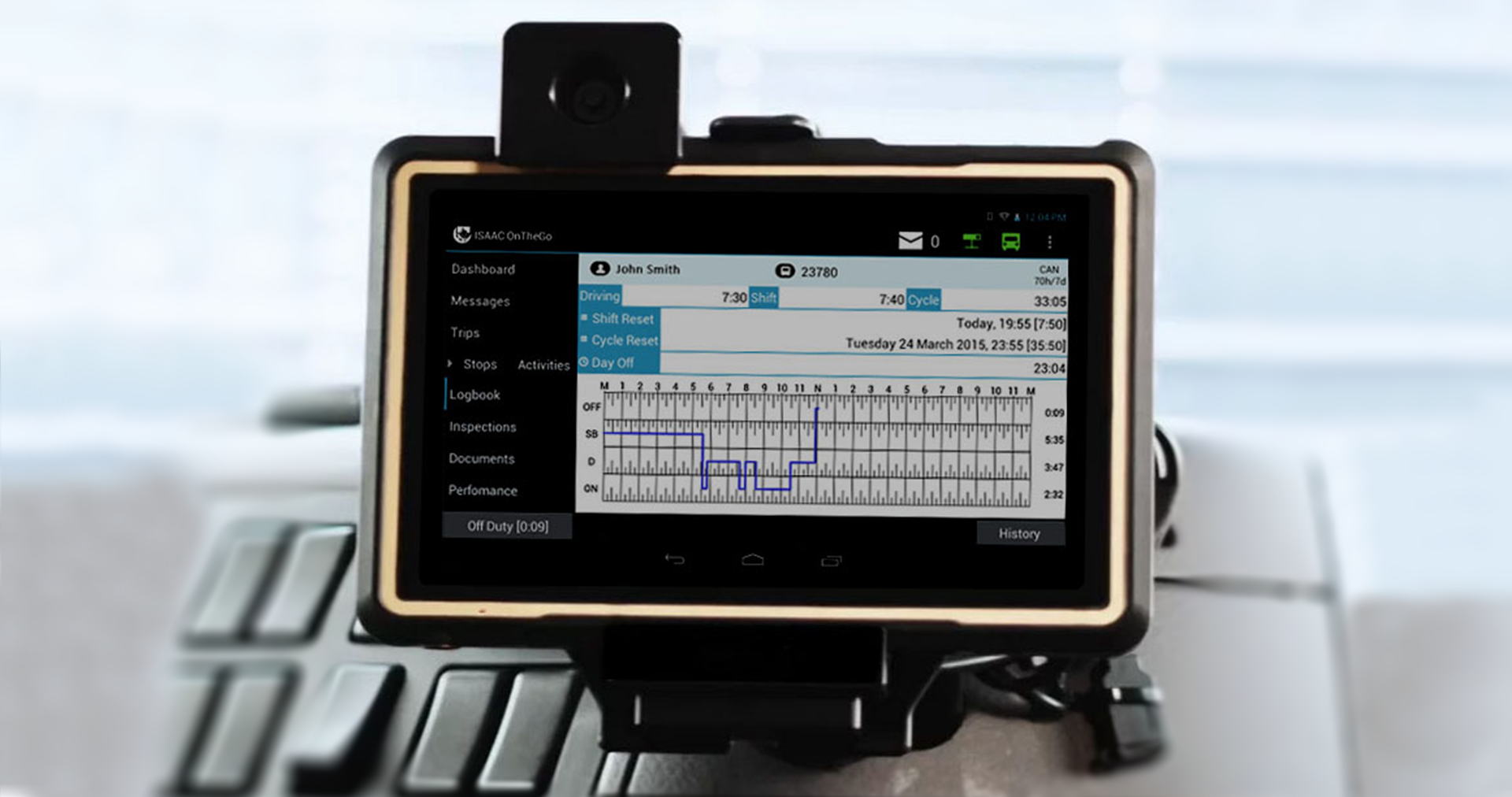
Oct
With the ELD mandate fast approaching and Congress looking like it is unwilling to delay the law from going into effect again, many trucking companies are scrambling to make sure their fleets are in adherence.
Calex is already prepared for the upcoming change, as we have been running electronic logs since 2009.
We pride ourselves on making sure each and every one of our trucks and drivers are in compliance with the mandate. Overtired drivers are a danger to everyone on the road, and Calex makes sure that every time our trucks are on the road, they are not a threat to those around them.
Calex ISCS is striving to be fully prepared ahead of time so we can ensure that the needs of our trading partners are met and our supply chain solutions experience no interruptions.
What Is the Electronic Logging Device (ELD) Mandate, and Who Needs It?
According to the Federal Motor Carrier Safety Administration (FMCSA):
“The electronic logging device (ELD) rule – congressionally mandated as a part of MAP-21 – is intended to help create a safer work environment for drivers, and make it easier and faster to accurately track, manage, and share records of duty status (RODS) data. An ELD synchronizes with a vehicle engine to automatically record driving time, for easier, more accurate hours of service (HOS) recording.”
In other words, the ELD Rule applies to any drivers or motor carriers who have to maintain their records of duty status (RODS). There are, of course, some exceptions to this rule, but it does cover most shipping services.
Why Were Some Organizations Against It?
As Congress debated the mandate, there were some organizations like the Owner-Operator Independent Drivers Association (OOIDA) that opposed it. The VP of OOIDA suggested that: “The electronic logging device mandate is written so broadly that it has far-reaching implications well beyond the traditional trucking industry.”
Nevertheless, the mandate passed since it was seen as an important step toward increasing road safety.
What Does an ELD Do?
These devices are designed to synch up with a vehicle’s engine and automatically record on- and off-duty time, miles driven, engine power status, engine hours, vehicle motion status, and more.
The driver can also certify his or her RODS is complete and accurate, transfer the data to a safety official, who can then review it and make recommendations.
Focus on Safety
The ELD mandate certainly caused a stir in the trucking industry, but the added safety is of significant importance – and one that matches Calex’s support of its drivers.
http://www.ttnews.com/articles/capitol-agenda-week-oct-2-seriously-eld-mandate-happening

